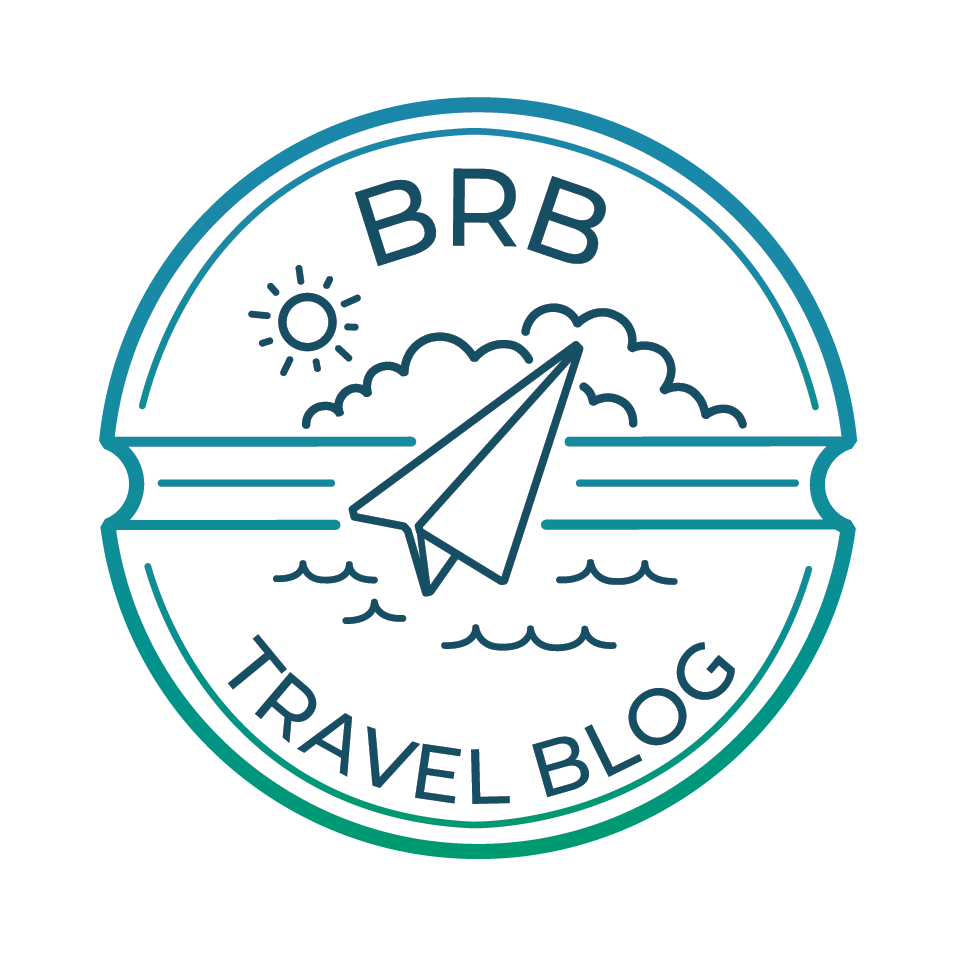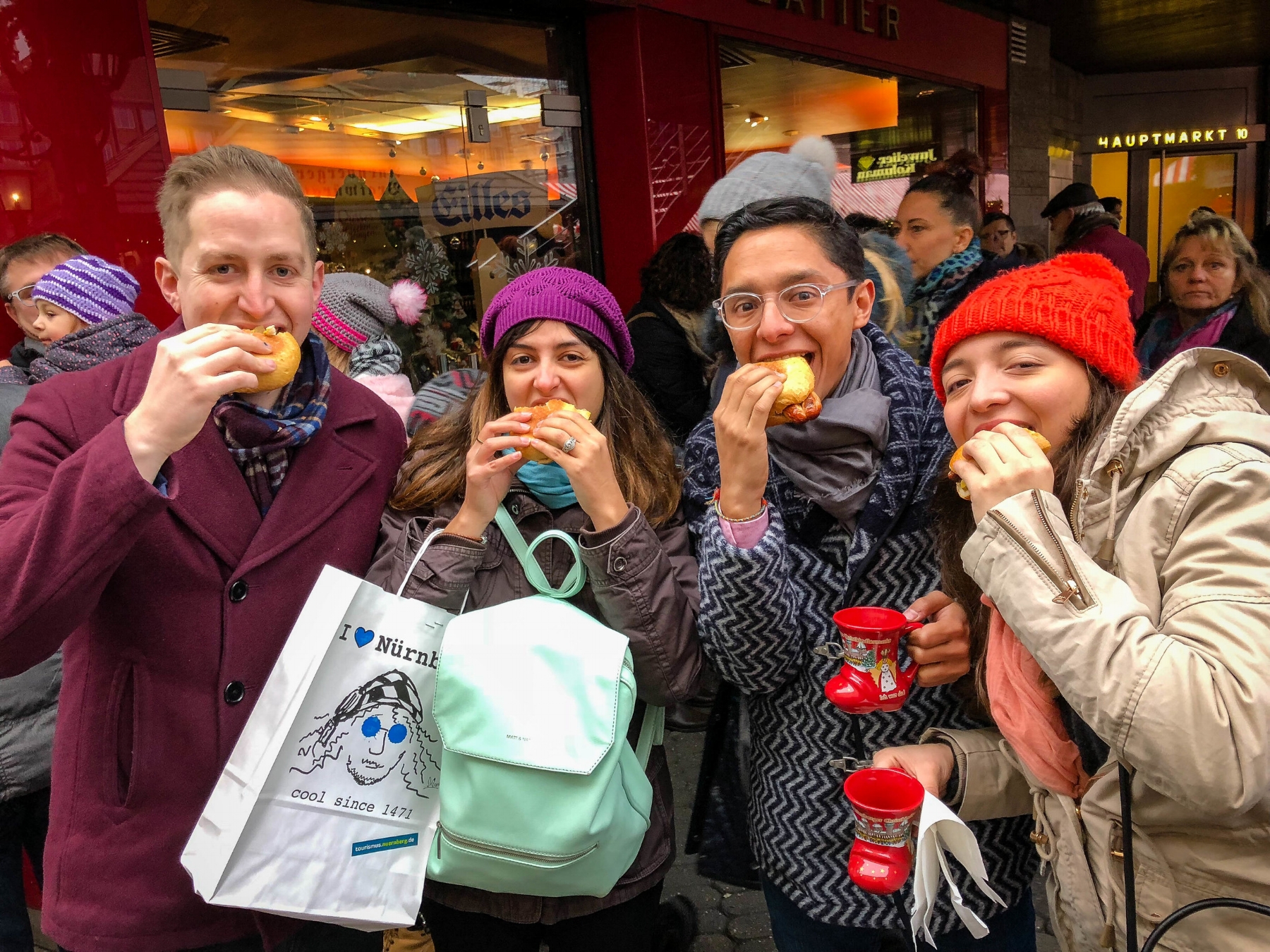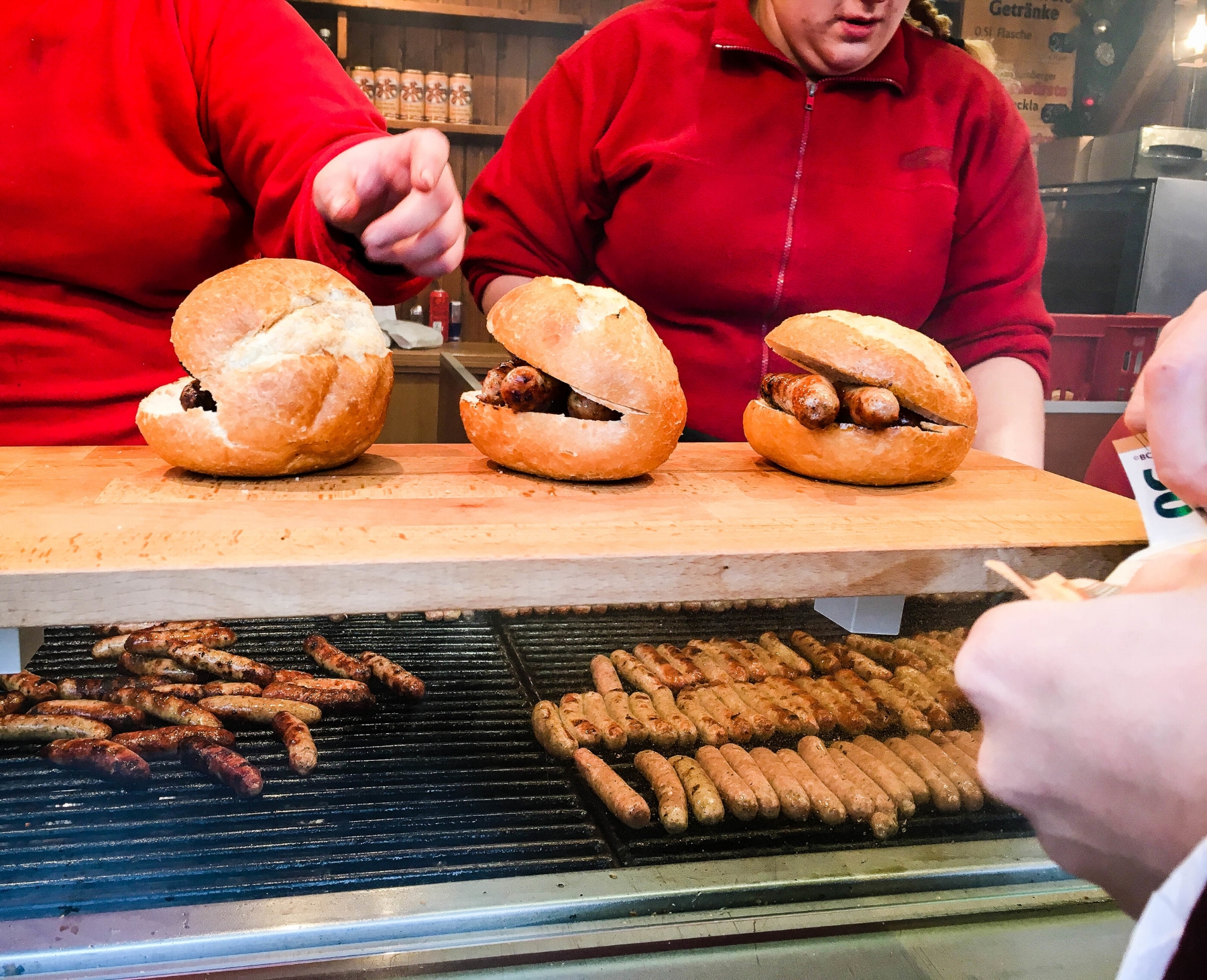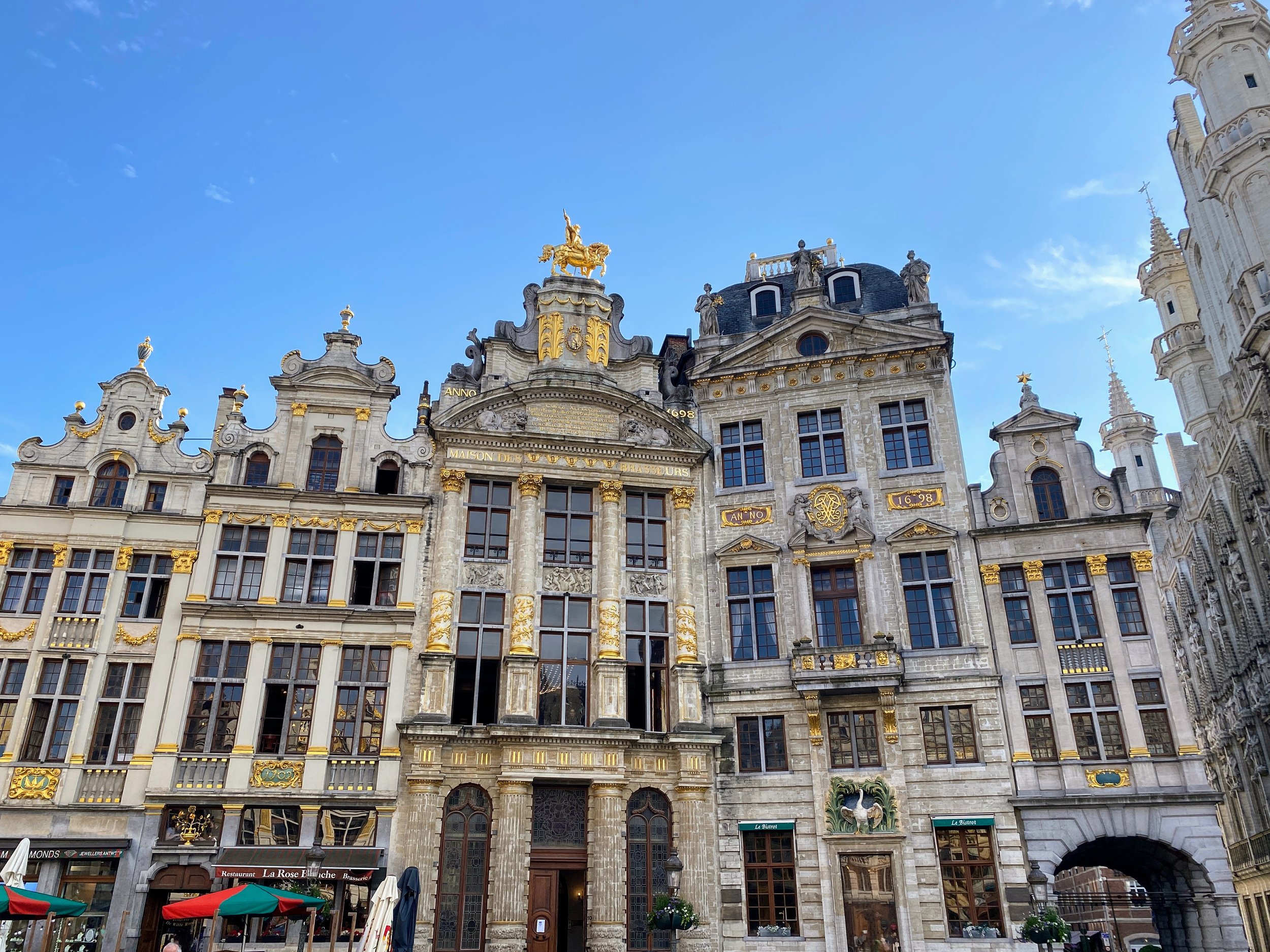What to eat at the Nuremberg Christmas Market ?
Nuremberg Christmas Market (Christkindlesmarkt) is one of the biggest festive markets in Europe. Located in the heart of the old walled town in the hauptmarkt, with more than 180 wooden stands with red and white roof cloths, the magical atmosphere is shared by all. This German Christmas market is one of the biggest and oldest markets in Germany and Europe dating back to the 16th century.
We visited the city on December 24th, perfect to spend the day before Christmas in the most renowned Christmas market. The lights, the jovial atmosphere and the yummy treats are perfect to get you into the holiday spirit. Our visit to Nuremberg was, sadly, an express one, we were there for only a couple of hours, just enough to experience the market and have a quick look at the walled city.
Pro tip: Beware that around Christmas day most of the activities and restaurants are closed or have shorter opening hours, so you need to plan your visit carefully.
The market is open for almost a month, it usually opens on December 1st and closes at 2 pm on December 24th. Check the opening dates since they change from year to year. This dreamy Christmas market should definitely be on your bucket list when visiting Germany.
© Uwe Niklas
What to eat at the Nuremberg Christmas market
Nuremberg is considered one of the culinary cities of Germany, so be sure to visit the market with an empty belly to be able to savour all the local gastronomy. Here is what you will try as traditional Christmas market food.
There are several stands throughout the market to try different products. However, the booths of "Original Regional", have all the regional traditional goodies concentrated here. These booths are always near the Church of St. Sebald, just across from the Historic City Hall. In these booths, you will find local specialties and traditional handicrafts from Franconia and the Upper Palatinate. Get your tastebuds ready for mulled wines, herbal teas, fine schnapps and brandies, fruit spreads made from local produce, traditional sausages made from lamb and beef and smoked pork products, pralines, handmade wool items, all-natural handmade soap, honey, beeswax products and much more. Everything is sourced and made exclusively from the region!
Nuremberg grilled sausages
The Nuremberg grilled sausages are a must! The finger-size sausages spiced with Marjoram are served all over the market in the format of “three in a bun”. The marjoram spice gives them a pinch of pine and citrus flavours. These sausages, or bratwurst, are a protected geographical designation. Why is this label important? Because they are 100% local and traditional. So when travelling in Europe, always search for these products for an authentic experience.
They were sooo good that I had to eat 2 sandwiches because I could not get enough! Don't forget to add mustard for an extra touch of flavour.
Mulled wine
A Christmas market without Glühwein, mulled wine, is an incomplete experience. Every market has its own original cup and you can keep it as a souvenir. The design changes every year. Nuremberg is in the heart of Franconia, one of the wine regions of Germany. The wine served in the market is a blueberry wine mixed with anise, cinnamon, cloves and other species.
I must admit that I was not a big fan, but the hot beverages did help bring back heat into my body.
Feuerzangenbowle
The “Feuerzangenbowle” is a red wine and rum punch. The name comes from the tongs which hold a burning, rum-soaked sugar cone over the punch bowl. As the sugar melts, its crystallizes into caramel and drips into the punch. The city has a special recipe since they are made in “punch bowls”, which are 2.5 meters wide and 3.4 meters high, they can contain up to 9,000 litres! Each bowl takes 48 hours to warm the punch to the proper temperature. You will find this special concoction at the “Feuerzangenbowle Village”, with its six huts offering food and drink. The village is located below the Fleischbrücke, next to the Christmas Market.
Nuremberg Lebkuchen, Gingerbread cookies
Just thinking about these, I start to have water in my mouth, this is how good these are! In the Middle Ages, the city was known as “the city of spices” since it was crossing numerous trading routes. Spices from all over the world were mixed to give the cookies complex flavours of almonds, cinnamon, ginger, honey and several other spices. Nuremberg Lebkuchen cookies are very different from the popular ones in North America. Chances are that if you don’t like ginger cookies you will like these ones as they are a bit sweeter and softer. The recipe has been used for over 600 years. You have different flavours such as chocolate- or sugar-coated or decorated with almonds,
Another must-try threat is the Gebrannte Mandeln, Roasted Almonds, whose smell fills the atmosphere of the market. In the stands, there are a variety of flavours so leave some room to try a few different ones!
© Steffen Oliver Riese
The Market
Besides all the delicious food, the countless stands showcase the best craftsmanship of the region. This is the perfect place to get your souvenirs and Christmas decorations to bring back home. On the local craftmanship are the Zwetschgenmännle, Nuremberg Prune People. These are kind of cute/creepy figurines. The legend says they will bring you money and happiness to your house.
The stage often showcases choirs and groups playing local music. I highly suggest checking the website beforehand if you wish to catch a concert.
The market is dominated by the imposing Our Lady Church. The church has a beautiful clock where wooden figurines come and go marking the hour change. The spectacle is very short so be sure to be at the market near the hour change to catch it!
Next to the historic old town hall market, you have the market of the sister cities. This market encompasses the craftmanship of Nuremberg sisters cities around the world. In this market, you can buy colourful souvenirs for the tropics from Carlos (Nicaragua) or tea from Shenzhen (China), all in one stop. There are more than a dozen sister cities that will take you on an instant journey around the world. Most of the proceeds from the decorations that you buy there go to charitable organizations in the sister cities. How cool is that?
If you are looking for a more complete guide on the German Christmas market, head to my other article for all the travel tips.
© Birgit Fuder
What to do in Nuremberg
Besides the Christmas market, the city offers several restaurants and cafes aiming to promote local gastronomy. However, the city also has plenty of museums.
The Kaiserburg, the imperial castle, dates back to the Roman Empire and overlooks the city. The tower and the well are open to the public.
The horrendous past of the Nazis and the Nuremberg laws are not to be forgotten. In memory of this dark past, the Nazi documentation centre explains the racist past and promotes human rights for future generations.
Getting around
Pro tip: I highly recommend getting the 2-day free admission card that costs € 28 and gives you access to all museums and public transport. By far, the best investment that you can make. Get your card here.
Hopefully, I will get a chance in the future to spend more time in this rich city. Nuremberg, I will be back!
Do you like the content? Why not help me by buying me a virtual cup of tea?
Disclaimer: Nuremberg tourism graciously offered the 2-day card and vouchers to savour the delicacies of the market. A big thank you! All opinions are my own


















![Best European cities to visit in March [+30 ideas]](https://images.squarespace-cdn.com/content/v1/58ae4fa346c3c4b688b9ac9f/1676418626875-LE8N0ADXJ33Q8CGEUPBS/Things_to_do_in_Lake_Como_Comer_See_Reisetipps+Image+2021-06-09+at+16.55.16+%281%29.jpeg)